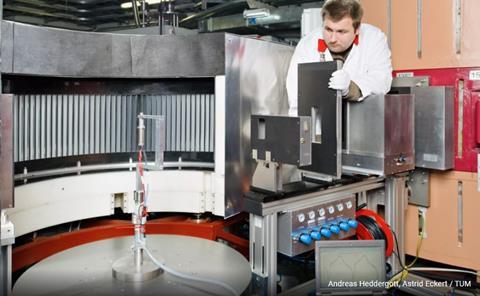A team of researchers at the Technical University of Munich (TUM) has discovered a new class of electrolyte materials with improved conductivity, which could enable the development of more powerful solid-state batteries. Solid-state batteries have no liquid electrolyte and instead rely on a solid substance to transport lithium ions from the anode to the cathode and back again. The lack of liquid electrolytes makes solid-state batteries more stable and safer than traditional batteries, but to date, the slow diffusion of lithium ions through solid materials has limited their potential.

The researchers at TUM have discovered a crystalline powder that conducts lithium ions better than average, which contains no sulfur but includes phosphorus, aluminum, and a high proportion of lithium. Laboratory measurements have shown that this previously ignored class of substances has a high conductivity. The chemists at TUM have also succeeded in producing around a dozen new related compounds that contain silicon or tin instead of aluminum, which allows for the rapid optimization of properties. The synthesized powders are therefore promising electrolyte candidates for future Solid-state batteries, according to the Munich researchers.
The discovery has the potential to accelerate the development of more powerful batteries, says Prof. Thomas Fässler, who leads the Chair of Inorganic Chemistry with a focus on New Materials at TUM. “Our objective was to better understand ion transport and then to use this knowledge to increase conductivity,” he explains. With the help of neutron diffraction, the researchers were able to visualize how the ions use free spaces in the crystal lattice for their migration. In the new class of substances, these free spaces are arranged in such a way that the ions are equally mobile in all directions. This is related to the high symmetry of the crystals and is likely the cause of the “superionic lithium conductivity.”
The project, titled “Potential Industrialization of solid-state Electrolyte Cells,” was funded by the Bavarian State Ministry for Economic Affairs, Regional Development, and Energy. The discovery of this new class of electrolyte materials is a significant breakthrough in the development of solid-state batteries, which could revolutionize the way we store and use energy.


















